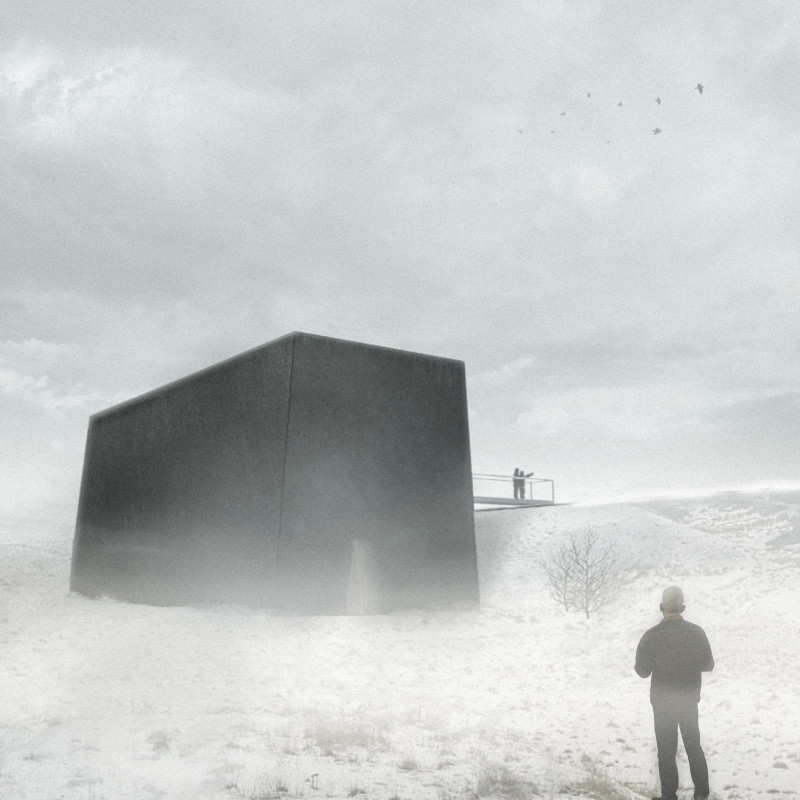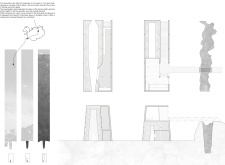5 key facts about this project
The design around the Grjótagjá Fault is situated in a landscape shaped by the movement of tectonic plates. The observation site provides a space for learning and engagement, allowing visitors to connect with the geological significance of the area. The concept focuses on creating a spatial journey that highlights geological processes and encourages exploration.
Scenographic Elements
The design features a scenographic space that mimics the shapes of tectonic plate apertures, guiding visitors through an interactive experience with the fault. By recreating these natural forms, the layout allows for a direct encounter with the geological features. Visitors can observe the fault from various angles, deepening their understanding of the area’s geological history.
Interactive Features
Rest and refreshment areas are thoughtfully integrated above the main observation space. A footbridge spans the fault, offering visitors a chance to pause and take in the geological surroundings from new perspectives. This thoughtful mix of areas for relaxation and exploration enhances the overall experience, inviting deeper contemplation of the fault’s narrative.
Spatial Arrangements
An interesting aspect of the design is the "upside down" arrangement. Visitors can look up to see the fault from an unusual perspective. The incorporation of water into the fault adds to the immersive quality. This feature not only engages the senses but also emphasizes the ongoing natural processes within the landscape, fostering a connection to the environment.
Thermal Integration
The project includes a floor heating system that utilizes local geothermal energy. This feature allows visitors to lie down and feel the warmth, offering a contrast to the cooler temperatures outside. Through this design choice, the experience is enriched, reinforcing the connection between the visitors and the geological context in which they are situated.
The site culminates in a clear architectural expression that emphasizes the complexities of tectonic movement. It encourages active engagement with the natural world. Water fills the fault, altering the landscape and inviting visitors to explore and reflect on the geological features.





















































